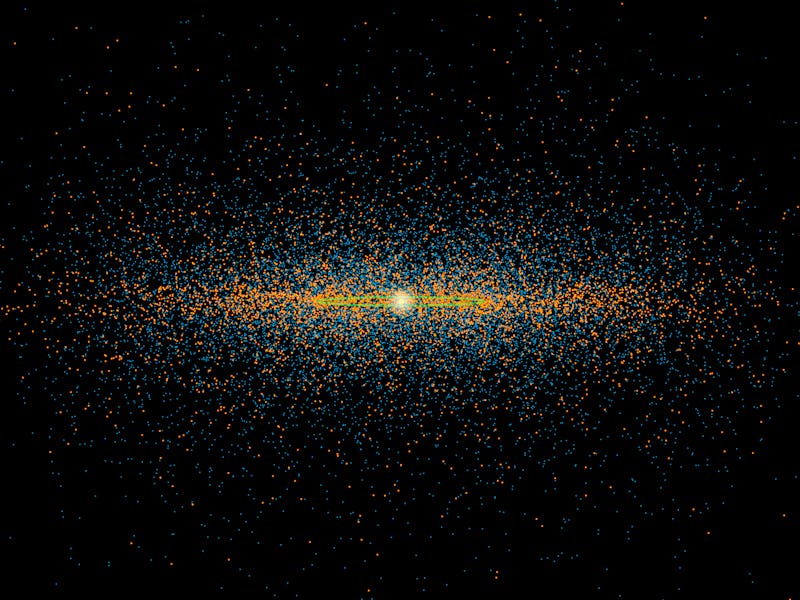Did NASA Screw Up Its Numbers on Its Asteroid Study? Nathan Myhrvold Thinks So
Billionaire techie Nathan Myhrvold pokes holes in the agency’s assessment of over 150,000 asteroids.

Nathan Myhrvold is best known as the dinosaur-collecting, cookbook-writing, and relentlessly unpredictable former Chief Technology Officer at Microsoft. He is considered by many to be too gifted to ignore, which is why heads turned when he started criticizing NASA’s math. Myhrvold, currently the CEO of Bellevue, Washington-based patent firm Intellectual Ventures, has a background in computers and a long-standing interest in asteroids. In a paper published on the arXiv repository on May 22, Myhrvold questions the validity of new NASA findings regarding the assessment of more than 157,000 asteroids, arguing that the scientists’ work is crawling with statistical errors that throws the majority of the new data into doubt.
Let’s rewind a bit and get to what exactly Myhrvold is criticizing. In 2009, NASA launched the Wide-field Infrared Survey Explorer, or WISE, to observe and assess objects in the solar system. The space telescope is currently operating under its second mission, called Near-Earth Object WISE (NEOWISE), to find, track, and characterize near-Earth asteroids and comets.
The entire initiative has led to a discovery of more than 157,000 asteroids and counting. NASA published a study in 2011 that detailed an improved technique its scientists have used to characterize the diameter of asteroids more accurately.
Here’s where Myhrvold raises his concerns. He says that the WISE and NEOWISE teams — which are thought to be responsible for discovering more asteroids than any other observatory on the planet — have made tons of errors. “None of their results can be replicated,” he told Science Insider. “I found one irregularity after another.”
He specifically cites flaws such as not taking into account the margin of error associated with extrapolating findings from a sample size to the larger near-Earth object population, and ignoring Kirchhoff’s law of thermal radiation when designing their models of thermal activity for the asteroids.
Myhrvold’s paper suggests the size of the WISE asteroids has been mischaracterized by about 30 percent on average. And this could balloon up to as much as 300 percent in some cases.
NASA’s scientists are saying the criticisms don’t hold water. “For every mistake I found in his paper, if I got a bounty, I would be rich,” WISE principal investigator Ned Wright told Science Insider. The research teams say WISEs data correlates with findings attained by two other infrared telescopes, AKARI and IRAS. In addition, Amy Mainzer, the principal investigator for NEOWISE, says Myhrvold commits some rather elementary errors in his paper, such as confusing diameter for radius.
Myhrvold acknowledges his paper has some problems, but counters that these are minor problems that don’t betray his overall conclusions. He thinks the reason the NEOWISE team is so dismissive of his concerns is that they are currently in the running for receiving funding from NASA’s Discovery program for their NEOCam project. If it turns out they’ve committed serious errors in assessing more than 157,000 asteroids, they would probably be quickly eliminated from contention.
Is Myhrvold in a position to really make such claims? It’s not the first time he’s used his role as an outsider to highlight problems in other scientific endeavors. In 2013, for instance, he published a paper showing problems in studies of dinosaur growth rates.
For his part, Wright got a particularly savage jab in when he noted to Science Insider that Myhrvold worked at Microsoft at one point, “[so he] is responsible in part for a lot of bad software.” Damn.
We’re not going to know whether Myhrvold is right until his paper is formally published (it’s currently being reviewed by Icarus). When that happens, other astronomers will dive in themselves and check to see whether Myhrvold has found a problem that’s unknowingly plagued a $320 million-plus project until now.